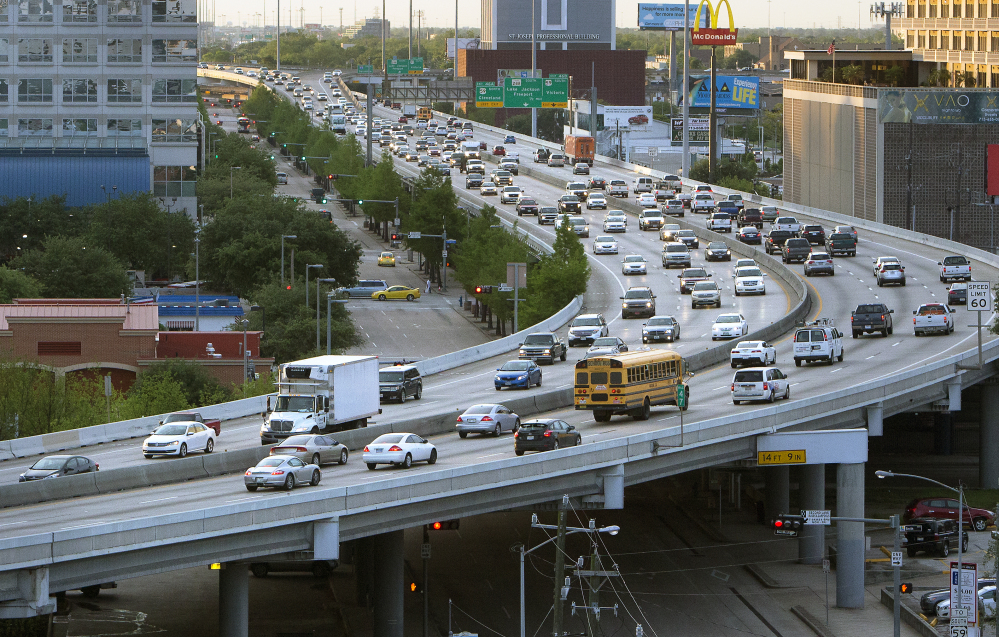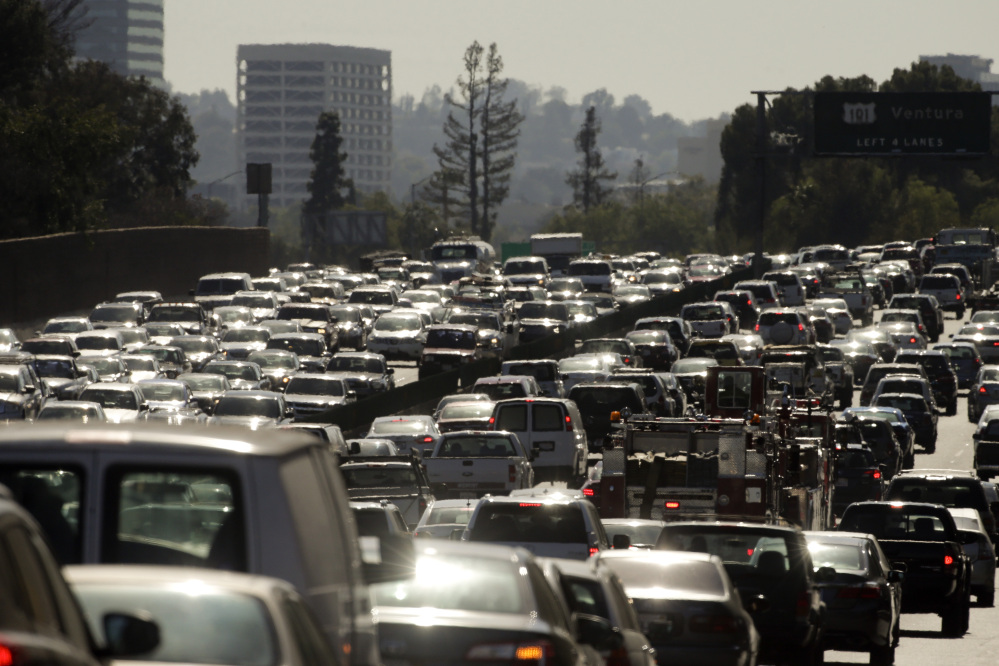At 4:35 a.m. each weekday, Stan Paul drives out of his Southern California suburb with 10 passengers in a van, headed to his job as an undergraduate counselor at the University of California, Los Angeles. Some 80 miles and 90 minutes later, the vanpoolers finally arrive to start their workday.
On the return trip, Los Angeles’ infamously snarled traffic often stretches their afternoon commute to three hours. Since Paul joined in 2001, he has spent roughly 1½ years aboard the vanpool and traveled far enough to complete a round trip to the moon.
“These super commuters, they don’t just give you a day’s work,” he said. “They give you their lives.”
Transportation experts say Paul’s long journey offers a warning for the future, when traffic rivaling a major holiday might someday be the norm for many more Americans.
“If we don’t change, in 2045, the transportation system that powered our rise as a nation will instead slow us down,” the Department of Transportation said in report earlier this year titled “Beyond Traffic.”
“Transit systems will be so backed up that riders will wonder not just when they will get to work, but if they will get there at all,” the report said. “At the airports, and on the highway, every day will be like Thanksgiving is today.”
The projections were based on a population increase of 70 million people and a 45 percent increase in the nation’s volume of freight.
That prediction has opened a growing divide between cities such as L.A. that have been making huge investments in new transit options and other regions that have been unable or unwilling to get ahead of the crisis, including the fast-growing South and Southwest.
ISSUE GOES BEYOND BIG CITIES
In some of the nation’s oldest cities in the Northeast and Midwest, urban planners don’t have to deal with an expanding population, but they are hampered by the need to repair roads and rails when they would rather build new futures for Philadelphia, Pittsburgh, St. Louis, Cleveland or Detroit, to name just a few.
The issue extends beyond big cities. Americans living in more sparsely populated areas are affected every time they head to cities for ball games, business, shopping or air travel. Within 30 years, the Department of Transportation projects, drivers will have to tolerate stop-and-go conditions or slow traffic for some period of each day on more than a third of U.S. highways.
To avoid this slow-motion catastrophe, the nation would have to act decisively – and soon. Expanding mass transit or building new freeways takes years, even when money flows freely, which is rarely the case these days.
In many fast-growing metro areas, transportation officials are trying to avoid becoming the next L.A., Houston or Atlanta – places struggling to undo previous decisions that led to mind-numbing, time-wasting, fuel-burning traffic jams.
Faced with traffic congestion so notorious that it has become a cultural touchstone in movies and comedy repertoires, L.A. has embarked on a transportation building binge funded largely by a sales tax voters passed in 2008.
New rail lines are extending to Beverly Hills, the airport and other places that haven’t had such service in decades. Regional officials call the $14 billion being spent on transit and new freeway lanes the nation’s largest public-works project.
In some ways, the building boom harkens back to the region’s past. Until the rise of the automobile, the city offered an extensive network of streetcars. The current rail renaissance is possible because planners preserved old rights of way, allowing them to build new lines where old tracks had been ripped out or buried under concrete decades ago.
CHALLENGES LOOM
Similar challenges loom over the Atlanta metro region, where population growth by 2040 is expected to result in a daily average congestion speed of 18.8 mph – about 10 mph slower than today. The cost of wasted time and fuel will more than triple, from $874 per capita to $2,945, according to the U.S. Transportation Department.
Some cities have turned to bus rapid-transit systems, which give buses the right of way, permission to operate at faster speeds and sometimes their own lanes. Those systems are already in place in Boston, Cleveland, Miami, Las Vegas, Los Angeles, Pittsburgh and Seattle. Planners in Jacksonville, Florida, hope to have more than 50 miles of bus rapid transit in place by 2019.
In Washington’s Maryland suburbs, officials are pushing for a 16-mile light-rail line to connect more affordable neighborhoods with jobs in the growing downtowns of Bethesda and Silver Spring, as well as the University of Maryland’s College Park campus. But after more than a decade of planning and debate, the line’s future remains uncertain while Gov. Larry Hogan considers whether the state can afford to build even a cheaper version of the $2.4 billion proposal.
Elected officials and transportation professionals generally agree on the nation’s intensifying traffic congestion but are divided about how to address it.
The Obama administration leans heavily toward getting people out of their vehicles, a solution preferred by many urban planners. New highway lanes aren’t enough, the theory goes, because they will simply attract drivers who had been taking other routes and encourage more sprawl. Soon congestion will be as bad as ever.
One alternative is to encourage people to trade suburban amenities for more densely developed neighborhoods where they can easily take transit, walk or bike to jobs, stores and entertainment.
Send questions/comments to the editors.




Success. Please wait for the page to reload. If the page does not reload within 5 seconds, please refresh the page.
Enter your email and password to access comments.
Hi, to comment on stories you must . This profile is in addition to your subscription and website login.
Already have a commenting profile? .
Invalid username/password.
Please check your email to confirm and complete your registration.
Only subscribers are eligible to post comments. Please subscribe or login first for digital access. Here’s why.
Use the form below to reset your password. When you've submitted your account email, we will send an email with a reset code.